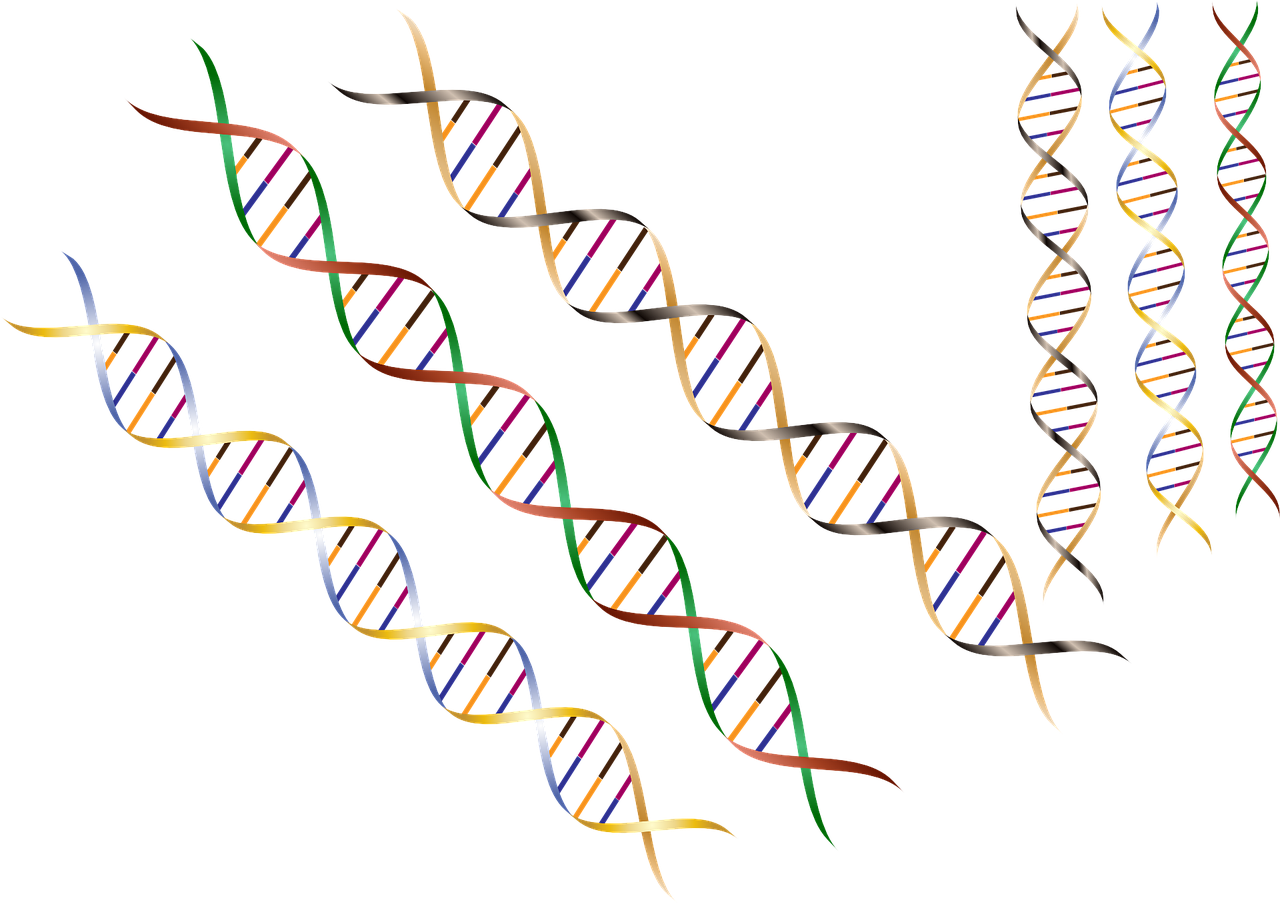
Huntington’s disease therapeutics conference 2021 – Day 1
Catch up on all of the latest updates from day 1 of the 2021 CHDI Huntington’s disease therapeutics conference #HDTC2021 including presentations from Wave, Roche and Triplet.



The CHDI Therapeutics Conference 2021 kicked off today. This article summarizes our live Twitter updates on the exciting science being presented, which you can continue to follow with the hashtag #HDTC2021. The morning of Day 1 focused on clinical trial updates, while the afternoon explored genetic modifiers of HD and how they might be harnessed to delay age of symptom onset.
Clinical Trial Updates from Wave and Roche
First up, we heard some important updates from Wave and Roche. We recently had disappointing news from both companies about their clinical trials which you can read about here and here.

Update from Wave Life Sciences
Vissia Viglietta provided an update from Wave Life Sciences first. Sadly, both the PRECISION HD1 and 2 trials had disappointing results. Viglietta started by thanking all of the patients for their participation in the PRECISION-HD trials and reiterated that Wave remains committed to finding medicines for HD. She then recapped the results of the recent trials, which showed poor and inconsistent huntingtin lowering, and therefore Wave decided these particular drugs do not warrant further investigation. When patients were treated with higher doses of the drug, HTT lowering was not observed compared to placebo. These results were not encouraging and differed from promising effects observed at an earlier time point in the clinical trial.
Wave’s drugs aim to specifically target the harmful form of the huntingtin protein made by HD patients, whilst leaving the normal form of the protein intact. Some good news is that no change was observed in normal protein when patients were treated. Wave also observed no changes in levels of a protein called NfL – a biomarker of harm to the brain. However, the patients receiving the highest dose of Wave’s drugs did have the most side effects and safety issues, some of which were severe.
Viglietta is now introducing the new drug from Wave, called WVE-003. This will also use an “allele-specific” approach so should only target the harmful form of the huntingtin protein. Wave is hopeful about this third drug because they have improved upon the chemistry for this new ASO. In cells in a dish, WVE-003 looks promising to decrease levels of the harmful huntingtin protein. In an HD mouse model, huntingtin levels also decrease in some areas of the brain affected by HD.
Wave’s drugs cannot be used to treat all patients, as they rely on a specific DNA barcode, which only certain people with HD have within their HD gene. Viglietta described a new way that patients can be quickly screened to work out who is eligible for their upcoming trial. She announced an upcoming Phase1b/2a study to test the safety of WVE-003 in patients and to investigate what dose might be best for this new drug.
Update from Roche
Scott Schobel from Roche spoke next to give us an update on the Phase III GENERATION-HD1 trial. Dosing in the trial was halted early but until now, very little information was provided as to why. Today they shared the preliminary data that informed the decision to halt dosing of their huntingtin-lowering ASO, tominersen.
Schobel began by expressing gratitude to the study participants, scientists, and patient organisations for the worldwide collaboration that made the GENERATION-HD1 trial possible. He then recapped the timeline of this drug’s development and highlighted why huntingtin-lowering is still considered to be a promising therapeutic strategy. The Phase I/II trial of tominersen showed good huntingtin-lowering and safety, and led to Roche selecting the highest dose (120 mg) for the GENERATION-HD1 trial. Data from the open-label extension, where all participants received tominersen, helped Roche to decide how often to deliver the drug in the Phase III study.
Ultimately patients in the GENERATION-HD1 study were dosed every 8 weeks or every 16 weeks. Based on preliminary results, an independent data monitoring committee made the recommendation that Roche stop dosing tominersen, and over the past few weeks Roche gained access to the data and has been analyzing it too. Schobel’s presentation was based on data from about 60% of people in the trial, and more data will be added as they continue to analyze the full results.
There’s no way to sugarcoat this: patients who received the drug did not have slowed or improved symptoms compared to those on placebo. For those who got tominersen every 8 weeks, their HD progression may even have been slightly worse. Measurements were made for many motor and cognitive tests, and the results are the same: on average all participants continued to decline over the course of the trial.
No new dangerous side effects or safety issues were observed in this trial. However, those who received tominersen had a larger volume of the ventricles, where fluid moves through the brain. This piece of data is difficult to interpret and will require a deeper analysis in the coming weeks and months.
In summary, tominersen was safe and well tolerated, but it did not help to slow or stop HD symptoms. This result is devastating, but it is what GENERATION-HD1 aimed to find out, and this is why dosing was halted early.
The study will continue without further doses of drug, but Roche will continue taking measurements in trial participants to get as much data as possible to help inform future drug discovery for HD. There are many important outstanding questions, like whether disease stage plays a role in response to tominersen, and whether certain populations could benefit more than others. Exploring the data further will help to begin answering these questions.
Schobel emphasized that Roche is committed to developing treatments for HD, and that they plan to analyze the remaining data and share the lessons learned with the community as soon as possible.
Big Questions from the Q&A
Both speakers took questions from the virtual audience.
Q: Why didn’t Wave’s drugs lower huntingtin in people as they were expected to do?
A: Viglietta highlighted the issue that Wave did not have a good animal model at the time to test their ASOs in vivo. This is not the case for the WVE-003 trial where they have promising huntingtin-lowering data in animals. She went on to explain that the levels of the ASOs in the PRECISION-HD trials were not as high as they had hoped in the different parts of the brain and nervous system, which might also explain the disappointing results.
“Nature has already found a disease-modifying treatment for HD with the variations scientists have found in these different genes – now we need to work out how to use this information to make medicines for the HD patient community.”
Q: Could the new chemistry for WVE-003 be applied to improve the drugs tested in the PRECISION-HD trials?
A: Yes; Viglietta explained that this chemistry could potentially be applied to create ASOs that target the same genetic barcodes targeted in the PRECISION-HD trials. As for WVE-003, this also requires a specific barcode – so if it is successful, around 40% of the population could be treated with WVE-003.
Q: Could the way tominersen was administered (spinal injections) be playing a role in the results of the Roche GENERATION-HD1 trial?
A: Schobel stated that this is currently unclear, but hopefully following full data analysis from GENERATION-HD1, we will have a better idea.
Q: Given the increased volume of the ventricles in the tominersen study, could brain inflammation be an important safety consideration for WVE-003?
A: Viglietta responded that it is a consideration, but more analysis is needed, and different drugs may cause different responses.
Q: How will these results inform future efforts from both Wave and Roche?
A: Schobel emphasized that the data will allow Roche and the entire HD research community to better understand how biomarkers relate to clinical measurements, which will inform future trials in the whole HD field.
We all hoped for a different outcome in both of these trials, but because they were well designed and well executed, they provide a wealth of data for the community, from which we can learn and move forward constructively.
HD Human Genetics: Modifiers & Mechanisms Towards Medicines
The afternoon session focused on genetic modifiers of HD and what they can tell us about HD biology. Genetic modifiers are small variations in the DNA code which can be drivers of earlier symptoms in people with Huntington’s disease and may account for why some people with the same CAG number can have symptoms start at very different ages. Many genetic modifiers identified so far are genes which are involved in a process called DNA damage repair, which is also thought to influence the expansion of CAG repeats, a process called somatic instability.
Identifying new genetic modifiers in large human studies
James Gusella kicked off the session with his talk on the need for ongoing genetic studies to help us understand and treat HD. He reminded us that although longer CAGs generally lead to earlier age of onset of HD symptoms, there is a lot of variation, and his research aims to understand why. He highlighted that nature has already found a disease-modifying treatment for HD with the variations scientists have found in these different genes – now we need to work out how to use this information to make medicines for the HD patient community.
Some HD patients have an interruption in their CAG repeats which can change when we would predict they would start showing symptoms, based on their genetic test results. We wrote about this here. Some of the important modifiers of symptom onset are genes like FAN1, which play important roles in how our DNA is maintained and repaired if damaged.
The genome wide association studies which help to identify these modifiers are ongoing and scientists like Gusella are collecting more data and using a variety of statistical tools to better understand their importance. Separate modifiers may affect different types of symptoms, suggesting relative importance at various stages of disease or in different cell types. Thousands of people with HD who have participated in these studies have made this type of large-scale data analysis possible, and Gusella thanked them for their time and dedication to this research.
Dissecting genetic modifiers of HD: understanding mechanism
Vanessa Wheeler gave the next presentation which dove into how we dissect and interpret data on genetic modifiers of HD to help us understand how the disease is working. Wheeler aims to test the effects of genetic modifiers in mice, specifically genes that affect the expansion of CAG repeats in the brain and body over time, known as somatic instability.
Wheeler proposed a new model for the way HD works. Firstly, with the rate of repeat expansion of the CAG repeat tract reaching a critical threshold and secondly with the toxicity caused by the harmful huntingtin protein. Her lab’s approach is to target the former, using a virus to deliver gene editing technology (CRISPR) to the livers of mice in order to knock out certain genes that contribute to CAG repeat expansion.

However, this is a complicated system; knocking out certain modifier genes can enhance or suppress expansion of CAG repeats in an HD mouse model, whereas others have no effect. Wheeler and colleagues are particularly interested in the interaction between modifiers with opposite effects, in order to tease out the complex influences different genes have on somatic instability, which will ultimately influence HD onset. This focus on an in-depth understanding of how different modifiers act independently and together is important for the design of novel HD therapeutics, such as those being developed by companies like Triplet Therapeutics, who we heard from later on in the today.
How FAN1 stabilises the HTT CAG repeat
Michael Flower then gave a talk about a gene called FAN1, one of the most important genetic modifiers of HD found in genetic studies so far. Flower provided the audience with background on what is known about how the FAN1 protein works, and what its normal roles in the cell are – key information if we want to understand why variations in FAN1 influence HD onset.
His team has developed a cell-based method for analyzing the impact of specific genes or drug treatments on somatic instability that enables them to measure where FAN1 is binding to DNA. Depleting levels of FAN1 accelerates somatic instability substantially, highlighting the importance of FAN1 in this process. Other genes – those previously discussed by Vanessa Wheeler – also influence somatic instability in this cellular system, suggesting they’re studying the same process.
Flower is now slicing and dicing the FAN1 gene, working to understand which part of the gene is most important for influencing somatic instability. This work suggests that there are likely at least two distinct regions of FAN1 that are influencing somatic instability. Flower and his team are now working to probe how FAN1 interacts with the other proteins known to modulate somatic instability in the Huntingtin gene – they’re observing interesting interactions between FAN1 and the other genes that control somatic instability. This work helps outline how we might want to target the proteins that control somatic instability as potential therapeutic trials in HD.
Blocking somatic expansion in Huntington’s disease models
Daniel O’Reilly gave the penultimate talk of day 1 which covered another one of the genetic modifiers found, a gene called MSH3. MSH3 is important to the process of somatic instability. O’Reilly uses a technology called “RNA interference”, or RNAi, to reduce levels of specific genes in the brain. His team has previously done breakthrough work using RNAi to lower levels of the HD gene across the brain, with strong and long-lasting effects. These RNAi drugs worked in mouse brains, but also in the larger brains of monkeys, which is a good indication that they could work similarly in human brains.
O’Reilly describes his personal motivation to find effective treatments for HD, which impacts his own family. The goal of O’Reilly’s work is to find RNAi drugs that can lower levels of MSH3 – one of the genes known to regulate somatic instability. The hope is that if we can lower the levels of this gene, we might be able to slow down somatic instability. First, they developed a RNAi drug that successfully reduces levels of MSH3 when injected into mouse brains. They found that lowering levels of MSH3 lead to a robust reduction in the amount of somatic instability in the HD gene, suggesting that this process can be controlled with drug treatments.
O’Reilly’s team has also developed a series of RNAi molecules that effectively lower levels of all the known genes that influence somatic instability, which will be very useful tools for the field.
Treating/preventing HD and other repeat expansion disorders by halting somatic expansion
Irina Antonijevic gave the final talk of the day on a new potential therapy for HD and other repeat expansion diseases, called TTX-3360, developed by the company Triplet Therapeutics. Antonijevic begins by highlighting that there are many different neurological disorders which are caused by repeat expansion – CAG repeats in the case of HD.
Triplet’s approach is to target the expansion of CAG repeats by creating drugs against one of the modifier genes discussed earlier, MSH3. Although several genes have been identified to modify CAG repeat expansion, Triplet chose to focus on MSH3 in humans because removing it in animals doesn’t affect their lifespan and has the lowest risk of causing cancer. Lowering the levels of MSH3 in mouse models of HD by 50%, reduces the amount of somatic expansion. Together with the evidence that higher levels of somatic expansion leads to earlier disease symptoms, this justifies why MSH3 is a good drug target.
Tripet’s clinical candidate is called TTX-3360 and it is an ASO which has been tested for safety and spread around the brain in small and large animal models. Triplet tested the best way to deliver their drug into the brain to see the best spreading to the key areas of the brain affected by HD. Using an injection directly into the ventricle of the brain, they hope their drug will be well distributed.
Triplet is planning a Phase I/IIa clinical trial beginning in late 2021 in presymptomatic and early symptomatic individuals with HD. They will measure MSH3 lowering and some imaging and fluid biomarkers. Antonijevic went on to describe an ongoing observational clinical trial called SHIELD-HD run by Triplet Therapeutics to better understand how CAG repeat expansion develops alongside symptoms of HD. Despite the challenges of COVID, the SHIELD-HD trial recruited ahead of schedule. Eligible SHIELD participants will be invited to participate in the upcoming Phase I/II trial for TTX-3360. Antonijevic thanked the participants and HD organisations which made the SHIELD-HD possible.
Till tomorrow…
That wraps up the talks from day 1 of the conference. We’ll be back tomorrow with more news and updates.
For more information about our disclosure policy see our FAQ…


